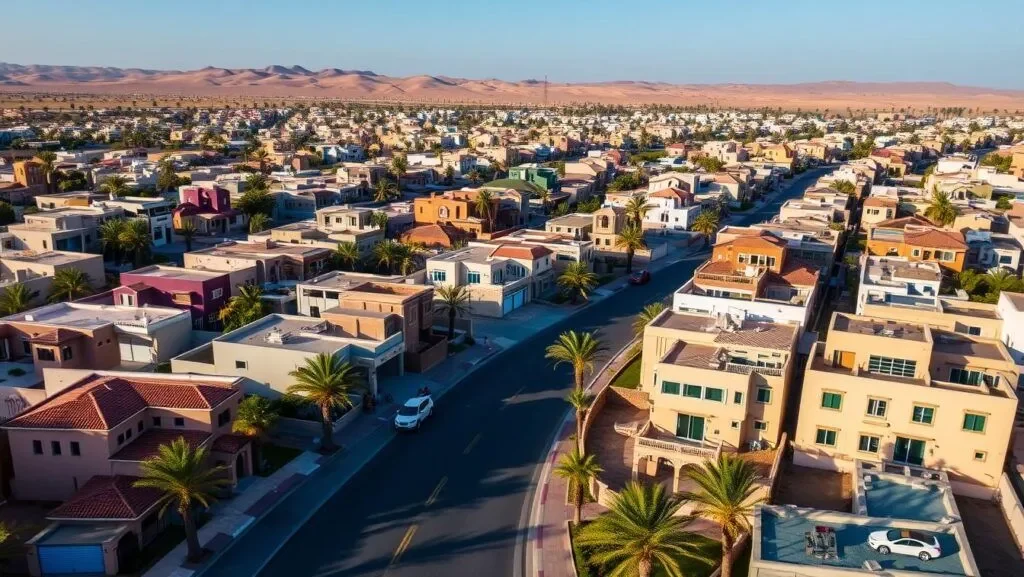Saudi Arabia’s Housing Market Struggles with High Prices and Affordability Crisis
Saudi Arabia’s ambitious plan to increase homeownership to 70% by 2030 is facing a major challenge: soaring property prices. The sharp rise in housing costs, especially in the capital, Riyadh, has made it increasingly difficult for middle-class Saudis to afford homes.
According to real estate consultancy Knight Frank, villa prices in Riyadh have surged by 81% since 2020, while apartment prices have increased by 56%. This rapid rise in real estate values is putting pressure on Saudi citizens who aspire to buy property, despite government efforts to boost housing availability and affordability.
Why Are Saudi Housing Prices Rising So Fast?
There are several factors contributing to the housing market boom in Saudi Arabia:
- High Demand and Population Growth:
- Riyadh is experiencing a major population increase as young Saudis move to the city for work.
- The Saudi government’s Vision 2030 plan aims to diversify the economy, leading to job creation in urban areas, which in turn increases demand for housing.
- Shortage of Affordable Homes:
- While the government has been expanding housing projects, many new developments are still too expensive for middle-income buyers.
- There is a gap between what Saudis can afford and the prices developers are setting for new homes.
- Rising Construction Costs and Inflation:
- Inflation and the cost of raw materials have gone up globally, affecting property prices.
- Higher borrowing costs due to interest rate hikes have also made financing homes more expensive.
- Foreign Investment and Luxury Projects:
- The Saudi real estate market is seeing increased interest from wealthy foreign buyers and investors, pushing prices higher.
- The government is also focusing on luxury developments as part of its efforts to modernize Saudi cities.
Government’s Response: More Housing Projects and Subsidies
To tackle the affordability crisis, the Saudi government has launched multiple initiatives to expand housing supply. The National Housing Company (NHC) is leading the development of new residential communities outside major cities, particularly in Riyadh.
- Over 30,000 homes are under construction in new suburban areas, with starting prices of around SAR 375,000 ($100,000).
- Many of these projects are supported by state-subsidized bank loans, allowing citizens to buy properties before they are completed.
- The government is also working with private developers to speed up construction and increase the number of available homes.
Housing Minister Majed Al-Hogail has emphasized that the solution to high prices is increasing supply, stating, “The more you have supply, the more you fix the affordability of that.”
Is Saudi Arabia’s 70% Homeownership Target Achievable?
The country’s homeownership rate currently stands at 63%, but the challenge is greater in urban areas like Riyadh, where the rate was only 53.2% in 2022.
Real estate experts estimate that Saudi Arabia will need to build 115,000 new homes annually to meet its 2030 goal of 70% homeownership. That means approximately 825,000 homes need to be constructed over the next six years.
While government efforts are helping, analysts believe affordability remains a key concern. A typical three-bedroom villa in Riyadh now costs around SAR 2.28 million ($608,000), whereas many Saudis can only afford to spend up to SAR 1.5 million ($400,000) on a home.
This price gap means that unless more affordable housing becomes available, many middle-class citizens may continue to struggle to buy homes, even with government subsidies.
What Does the Future Hold for Saudi Housing?
The coming years will be crucial in determining whether Saudi Arabia can balance rapid economic development with housing affordability. Key factors that will shape the market include:
- Continued government support for housing programs – More subsidies and financing options could help middle-class buyers enter the market.
- Private sector involvement – Encouraging private developers to focus on mid-range and budget-friendly housing instead of luxury projects.
- Regulatory reforms – Policies to prevent excessive price hikes and speculation in the real estate market.
For now, Saudi Arabia’s real estate market remains a challenging environment for buyers, especially first-time homeowners. As property prices continue to rise, the government will need to expand affordable housing solutions quickly to ensure that homeownership remains within reach for the majority of Saudis.
Do follow gulf magazine on Instagram
for more information click here



